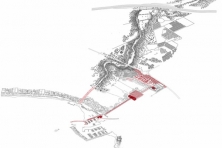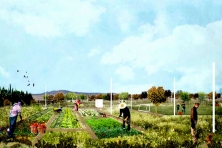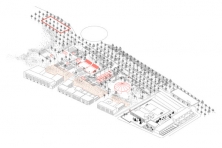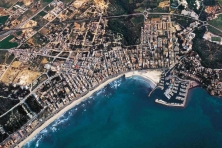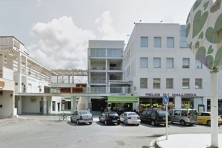A social infrastructure
Platja de Palma (ES) - Special Mention
TEAM DATA
Team Representative: Clément Ringot (FR) – architect
Associate: Maxime Beel (FR) – architect
107 rue du Prévôt, 1000 Ixelles (BE)
+33 618 751 055 – ringot.clement@gmail.com
See the complete listing of portraits here
See the site page here

M. Beel & C. Ringot
INTERVIEW
Click on the images to enlarge
1. How did you form the team for the competition?
We met in Tournai (BE) where we received our architectural education. Our shared interest for the large scale led us to share the same studio, where we learn to collaborate. After graduation, we both went to Brussels for work, one of us in an architecture office, the other in a landscape studio. This complementarity of formation was something we were seeking, and it proved to be a deeply rewarding experience.
2. How do you define the main issue of your project, and how did you answer on this session main topic: the place of productive activities within the city?
We thought at first that one could not forcefully implement productive activities in the city and hope for it to work, as the city always offers some kind of resistance to those actions. Over time, it became clear in our mind that the theme of production, and its implementation in the city was intrinsically connected with the question of the territory. For decades, the development of the tertiary over productive activities led to an urbanism that only make sense since it is related to capital and not to local conditions. However, production is about local conditions, about the materials and the savoir-faire. A productive city is, therefore, one that takes part in the larger scale, one that fits with confidence into its own territory and benefits from it. Therefore, the aim of the project was mainly to reconnect a lost urban figure to its own territory, so that productive activities related to the local environment could take place on their own.
3. How did this issue and the questions raised by the site mutation meet?
In the present case, S’Arenal – just like the rest of Platja de Palma – is clearly disconnected from the hinterlands of the island. For decades, urban development has been solely focused on the sea, creating a strong frontier between the waterfront and the rural territories. There was a need to reconnect the district to this lost territory, and we saw an opportunity in the figure of the Jueus water stream, a strong landscape piece situated on the side of S’Arenal, yet completely hidden. By extending the main axis of S’Arenal through the existing mall, we had the possibility to build a true civic artery spanning from the yachting club to the primary school and reconnect the district to the water stream figure. By acknowledging this great figure, we help S’Arenal building a strong identity, and give the community the keys to become a productive city, working in harmony with its territory.
4. Have you treated this issue previously? What were the reference projects that inspired yours?
The relationship of the urban fabric with its territory is something we started researching at school. The large-scale analysis can sometimes be really time-consuming, though it is often very rewarding, so we try to develop them as much as possible in our work. We were influenced by many projects across several fields, including infrastructure works and landscape, as those disciplines often deal with the larger scale and a complex temporality. We are thinking about the work of Ticino architects (Snozzi, Galfetti ..), landscape offices (Bureau Bas Smets, Michel Desvignes) or even the Haussmanian plan for Paris… All of which were more or less conscious influences.
5. Urban-architectural projects like the ones in Europan can only be implemented together with the actors through a negotiated process and in time. How did you consider this issue in your project?
While our project seeks larger scale, we made sure to avoid the utopian one-gesture treatment that is difficult to develop and often is a failure due to the lack of understanding of the local conditions. The project is therefore divided in several pieces that both work as a whole and in relation with their direct context. This process also allows us to give more flexibility to the development process as every part of the project can be dealt with separately.
6. Is it the first time you have been awarded a prize at Europan? How could this help you in your professional career?
First time! It is a bit soon to say but as young professionals, it will definitely be a good reference to gain access to other missions in the future.
